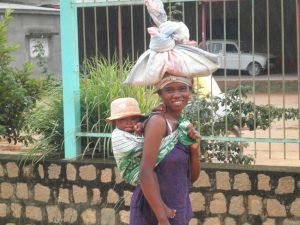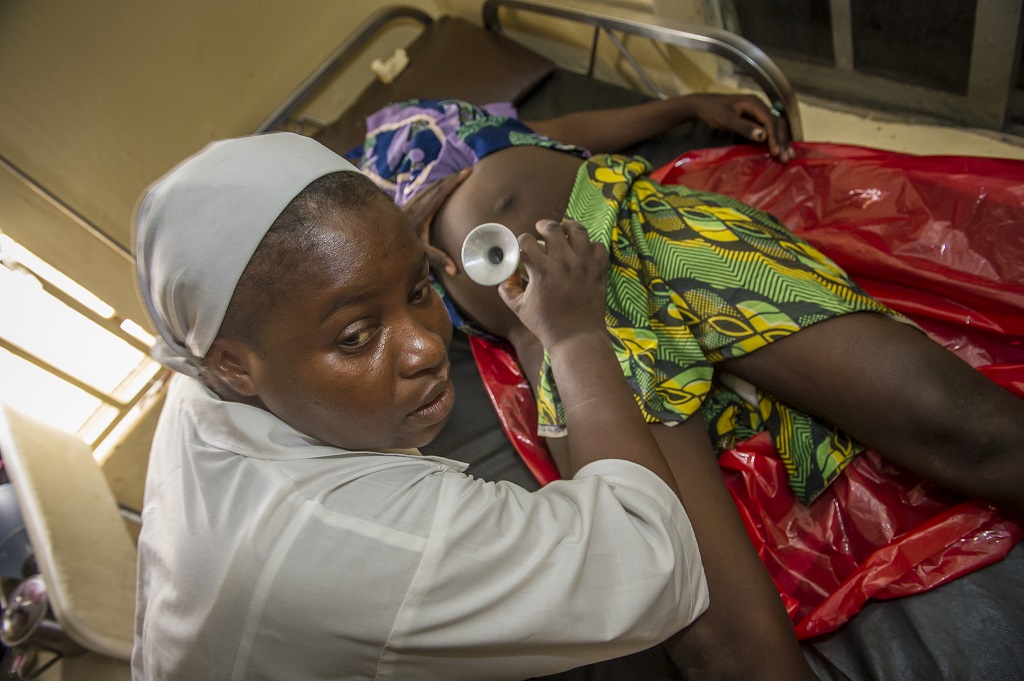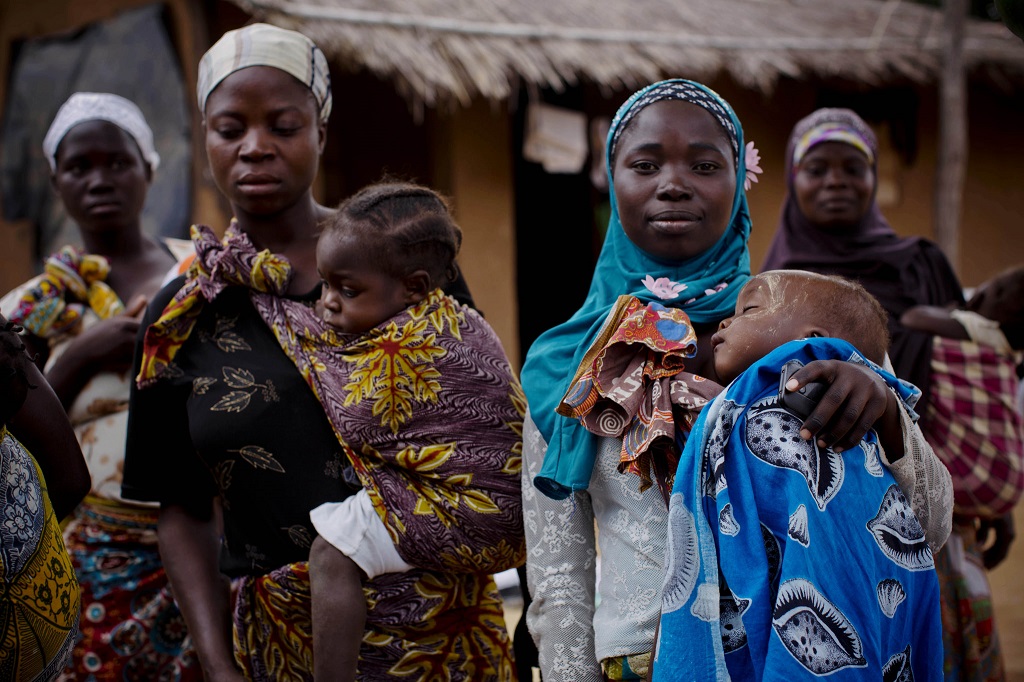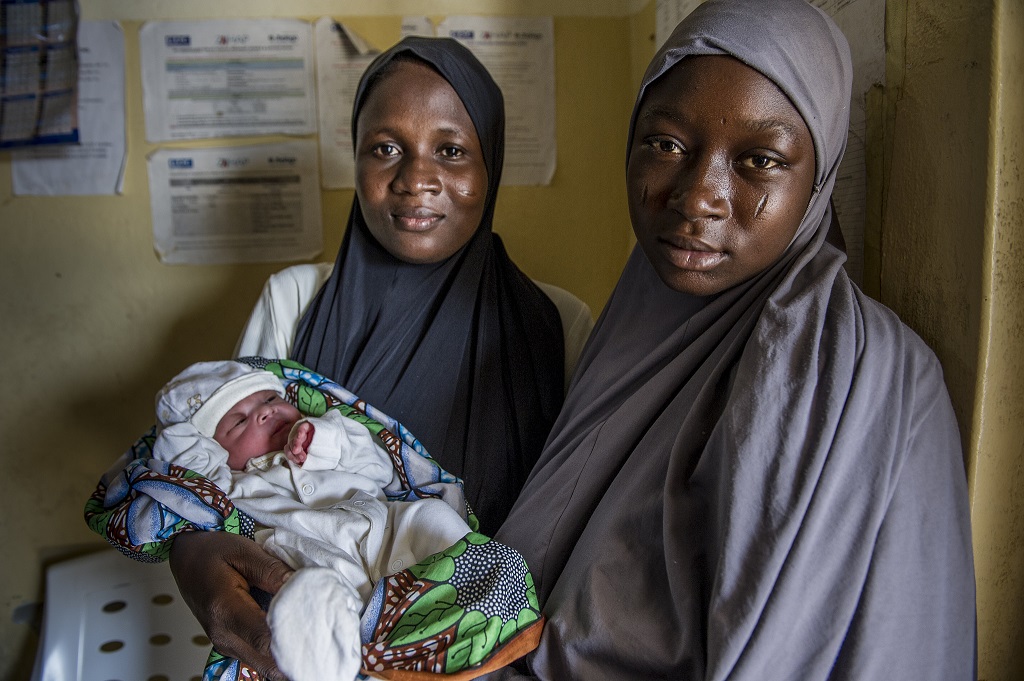This blog also appeared on K4Health’s website.
Thirteen million adolescents will give birth this year. And their challenges won’t end with delivery – these first-time and young parents (FT/YP) face unique risks that we must meet to help prevent child and maternal deaths.
Here’s what we know: women under age 20 are twice as likely to die in childbirth as women over 20. Early pregnancies limit educational achievement and income-generation potential, and they increase the risk of poor health outcomes for both young mothers and their children.
In fact, pregnancy and birth-related complications are the second leading cause of death among adolescent girls.
These elevated risks extend to the lives of their children, as well. Those born to adolescent mothers have a 34% higher chance of neonatal death and a 26% higher risk of death by age five. Because most (90%) pregnancies to adolescent girls occur within the context of marriage, young mothers often experience rapid, repeat pregnancies, too, increasing the risk of low birth weight, preterm birth, and newborn death.
Despite this, only 1/3 of married adolescent women in low- and middle-income countries hoping to avoid pregnancy use a modern method of family planning (FP).
MCSP is helping to close this gap. Most programs aimed at adolescents target delaying marriage and/or the first pregnancy, and overlook those who have already started their reproductive lives. As a result, FT/YPs are an underserved population with important health needs.
We’re testing approaches designed to connect FT/YPs to health services in three of our country programs – Madagascar, Nigeria and Mozambique – and these efforts are bearing fruit.
In Madagascar, an MCSP formative research study explored factors and identified individuals that encourage and limit FT/YPs from using health services. In both coastal and mountainous communities, we hosted focus group discussions with FT/YPs who had not used health services during pregnancy or delivery, and held in-depth interviews with those who had.

We asked young parents who in their families and communities had been helpful as they made decisions regarding where to deliver and how best to care for their babies. They also responded to our questions related to a fictitious story about a young couple who marry and prepare to welcome a baby together. Putting themselves in this young couple’s shoes, we asked them:
Who helps the mother decide where to deliver her baby? Is the father involved in the decision? Who helps after the baby is born? Do the parents talk about how many children they want to have and whether to use FP?
While they expressed anxieties, most FT/YPs said that having a child was a happy, exciting life event. They described their child as a successor, a continuation of the family’s legacy, a blessing, a wealth, a companion, a pillar that maintains the honor of the family, and a support in old age and in case of illness.
“It’s not nothing to have a first child,” one young father in a focus group told us. “It’s the first treasure, this child.”
We found that many FT/YPs are unaware of the benefits of using sexual and reproductive health services. Since talking about sexuality is still taboo between parents and children, FT/YP said their parents hadn’t told them about these services until after their first child was born. The decision of FT/YP to use services are heavily influenced by the preferences and customs of their mothers and mothers-in-law. Community health workers proved to be key resources for FT/YPs and their influencers during pregnancy, birth and the postpartum phases.
Notably, when it comes to family planning, community health workers were the only group found to positively influence its use – but only when they are properly trained.
Unfortunately, many are not trained and, therefore, can be sources of rumors and misinformation. A great deal of trust is also given to traditional birth attendants, which further decreases FT/YP use of facility-based services, particularly for delivery.
“There are not a lot of girls who go [to the hospital],” said another young father. “They do not frequent the hospital too much since the [traditional birth attendants] here are all very competent.”
Based on these findings, MCSP worked with stakeholders at the Ministries of Health, Youth and Sport, and Population to design an intervention called Tanora Mitsinjo Taranaka (“young people looking after their legacy”) – or TMT – to reach FT/YPs and those that most influence them. Because community health workers proved so persuasive to both FT/YPs and their influencers, we’re training them to lead household visits and discussion groups.
MCSP is also working with health facilities to ensure they are are welcoming to young people – for example, working with facility staff on how best to communicate with adolescents. They’re also learning to provide support to community health workers, and improve the health facility environment to better address youth needs.
Because this is the first time a program in Madagascar has targeted young parents, we’re building in opportunities for learning and reflection about what is – and isn’t – working.
Two months after the initial TMT training, MCSP hosted the first in a series of periodic reflection meetings in the two districts, bringing the trained community health workers back together to share their experiences. It became clear quickly: our efforts are bearing fruit!
One community health worker – Randriamahazo Pierre Honoré – lives in a rural community 20 kilometers (12 miles) from the district capital. He discussed bringing the skills and knowledge he learned from the TMT

training to his isolated community, where residents have to cross the Mahajilo River by canoe to get to the nearest health facility.
One evening, as he met with a group of adolescents in his home, a young woman arrived seeking his advice. Already the mother of five, she was ready for a break from pregnancy and raising small children, she said. However, her husband worried that using FP would eliminate any possibility of more children in the future, threatening their legacy.
Honoré used the TMT booklet to explain the advantages of using FP for the entire family. “I explained to this couple that FP could be used to space pregnancies, and that they could stop using and try for another baby when they were ready,” he recounted. “I also told them that my wife and I used FP and how it benefited our family.”
Slowly, the young father began to change his mind, and when the couple returned home that evening, they continued to discuss Honoré’s advice. Together, they decided to use an FP method.
“My family has benefited so much from my work, because of everything that I have learned about how we can protect our health,” Honoré said. “And I enjoy being able to share what I have learned and my own life experiences with young people.”
The TMT training also empowered Dr. Céline Raharisoa, who runs a health center in Morondava, and her midwife colleague, Soafarahanitra Sylvia, to better engage FT/YPs and young people, generally. Many local adolescents become pregnant, Dr. Céline reported, but rarely use health services.
In a small community served by only one health facility, young people fear being seen by neighbors and relatives as they wait for services.
As a result, few access FP services and pregnant adolescents often only begin to come for antenatal care when their pregnancy is too advanced to be concealed. Without building a connection with the health center early in pregnancy, they are unlikely to continue to come for antenatal care or choose to deliver in the facility.
Following the training, Dr. Raharisoa dedicated set times for adolescent services, enabling them to avoid long wait times. This – as well as weekly discussion sessions in the community with FT/YPs – have led adolescents to encourage their peers to come to the facility, as well.
“Young people in the community often have little information about their bodies and how pregnancy occurs, and often do not feel empowered to make choices about their own lives,” Dr. Raharisoa said. “Sometimes when I ask young people how many children they would like to have, they tell me that it is not their decision, and that their parents will decide for them.”
Our success in Madagascar allowed us to adapt this research approach in Nigeria. Mothers and in-laws are similarly highly influential in the West African country; however, the role of fathers varied. Another key difference was the influence of service costs in shaping the decision to use – or more often not use – health services.

Although health services are free in Nigeria, incidental expenses (such as gloves, syringes and transportation), can be prohibitive, particularly for delivery, and can vary based on the situation. Many participants contrasted these expenses with the costs of using the services of traditional birth attendants, whose services are less expensive and often allow families to pay their debts over time rather than immediately.
However, while few expressed confidence in the skills of traditional birth attendants, many continue to use their services due to cost and access barriers as well as family pressure.
As one participant in a focus group of influential family members told us: “I cannot recommend [use of traditional birth attendant services], because [they] will not be able to address all the complications from the delivery process. It will be at the last minute before they will ask the family to take her to the hospital and the unexpected may happen.”
Thanks to MCSP’s global reach, as we moved from Madagascar to Nigeria to Mozambique, we easily identified and shared existing resources, rather than starting from scratch.
In Mozambique, where 52% of women age 20-24 are married by age 18 and one-third of women give birth between 15-19 years of age, MCSP adapted Save the Children’s My First Baby guide – originally designed for use in Nepal – to improve maternal and neonatal outcomes of Mozambican married, pregnant and parenting adolescents. One of the most significant adaptations was to approach first-time parenting with a gender-focused lens to increase male involvement and couples communication and address gender norms. The title of the guide became Nos e Nosso Primeiro Bebe (“Us and Our First Baby”), for example.
MCSP organized community consultations using a variety of participatory activities and discussions with young women and men, most of whom were pregnant or parenting. Additional focus group discussions were held with community leaders, health workers, and other influential community members. These consultations helped identify the knowledge and service gaps for FT/YP and gather valuable feedback about what adaptations were needed to ensure the guide was relevant for the Mozambican context. This included adding content for boys and young men, fatherhood, and gender relations.
We brought the revised materials back to the communities to test their ease of use, and ensure they were well understood and reflected the recommended changes. The young women and men liked the interactive and participatory activities best, but felt that all the information was important to learn – even when the style was of a more traditional teaching methodology.

The topics that generated the liveliest discussion were around family planning and gender roles.
Participants found the role plays and games that challenged them to understand traditional gender roles and division of tasks quite eye opening. Young men explored what kind of father and partner they want to be – from pregnancy through caring for their infant. Dialogue and reflection around gender roles and societal expectations encouraged men to see themselves not just as providers, but as family caregivers. To promote couples’ communication around the healthy timing and spacing of their pregnancies, information is included on returning to fertility following childbirth and postpartum family planning.
The materials – which include the facilitator’s guide, a picture-based flip book, and a handout for participants – are now being pilot tested in six communities in two provinces. While we don’t assume that the needs of FT/YPs in one country will parallel those in another, work in all three countries has created a strong foundation for our future work meeting the needs of this often overlooked population.
Our formative research and intervention design processes enabled us to identify lessons for increasing sexual and reproductive health service use by FT/YPs.
Key lessons include:
- Applying an approach that engages key influencers of young parents (particularly mothers and mothers-in-law) in addition to engaging FT/YPs directly.
- Ensuring these individuals with significant influence over FT/YPs have accurate information about safe delivery, postnatal care (including postpartum FP for healthy timing and spacing of pregnancy), and newborn care – while challenging attitudes and social norms that stigmatize FT/YPs.
- Implementing an approach that also engages young fathers, addressing gender norms, building capacity for couple communication, and encouraging positive male involvement in postpartum FP and parenting.
- Strengthening health system capacity to provide services that are friendly and attractive to adolescents and young people.
- Using messaging to emphasize the benefits of health service use, particularly the reduction of risk to both mother and baby.

